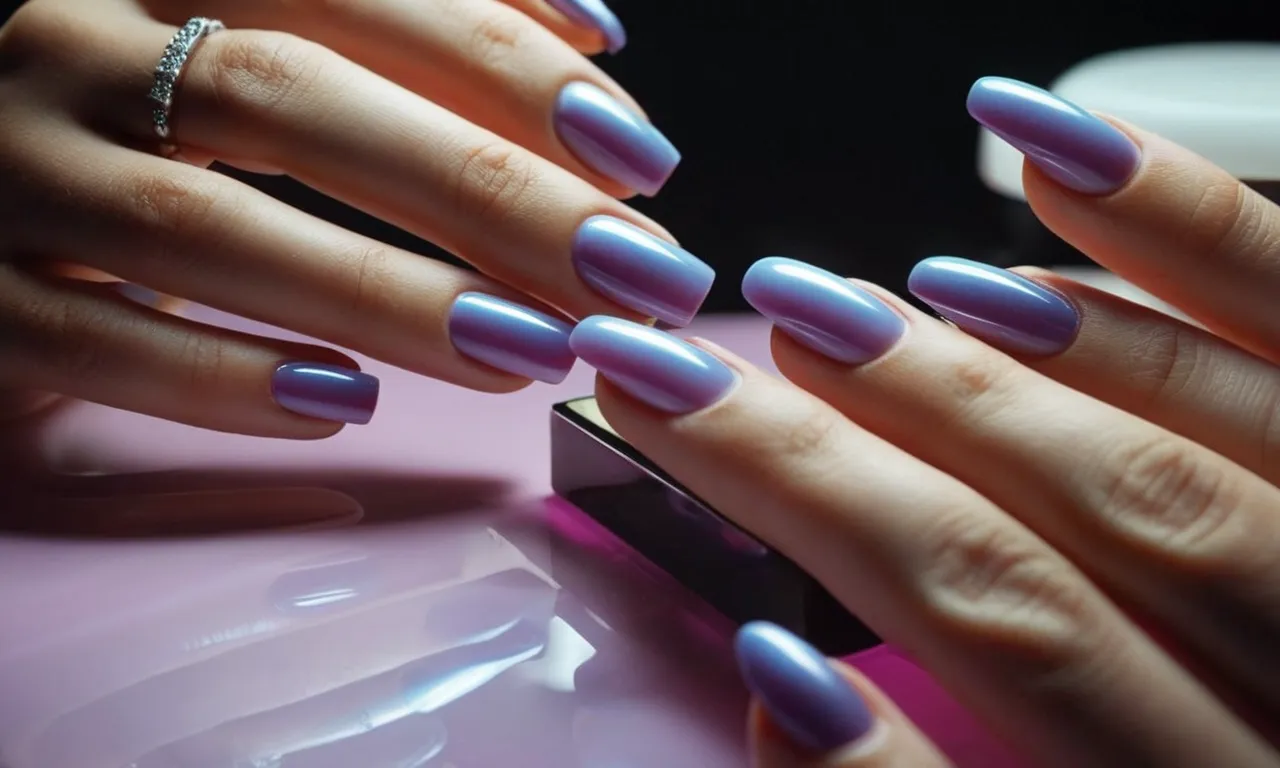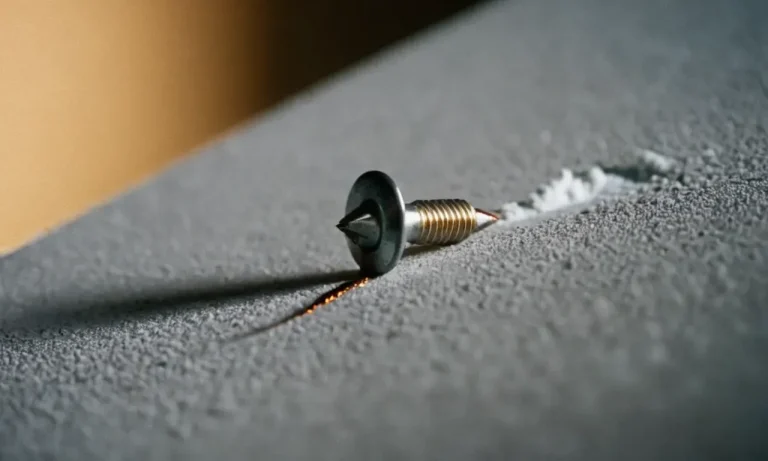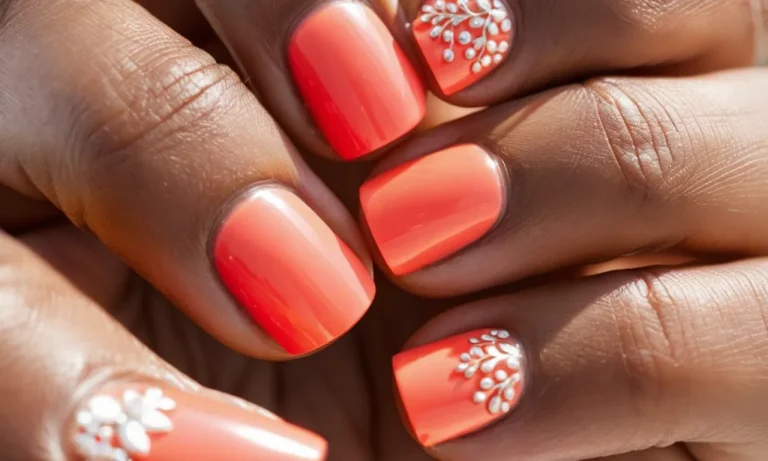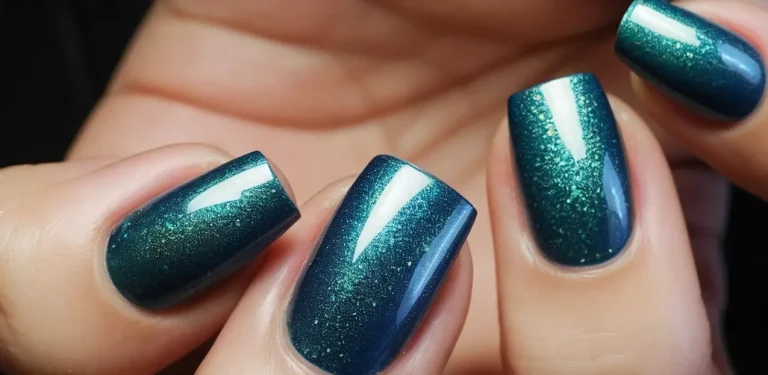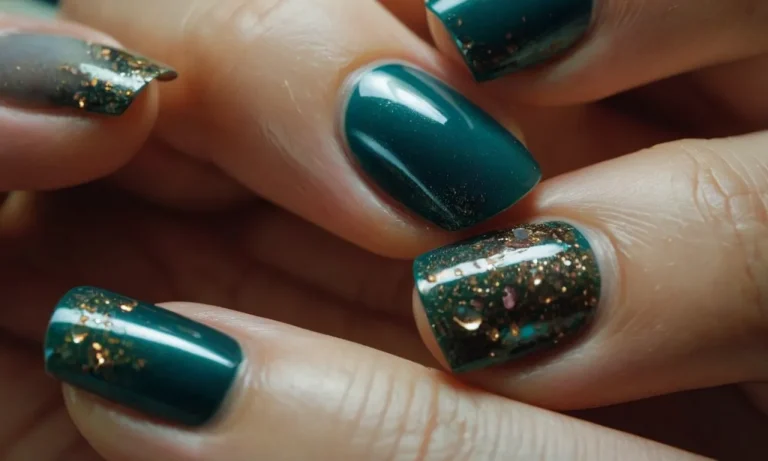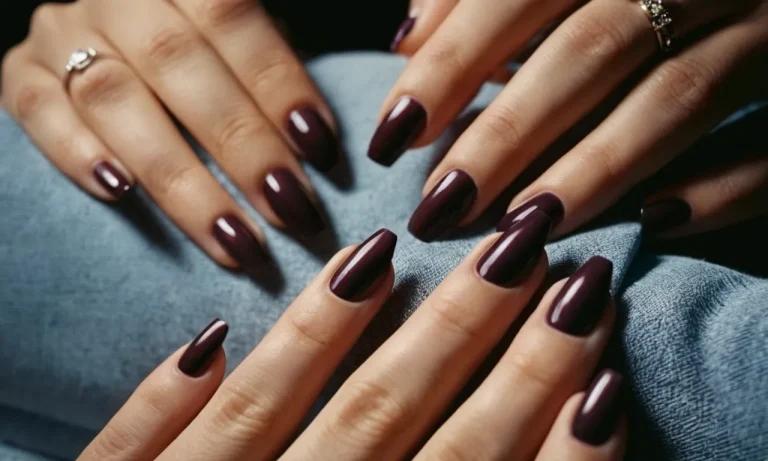Can You Use Uv Gel As Glue For Fake Nails?
If you enjoy getting fake nails or nail extensions but find the process tedious and expensive at the salon, you may be tempted to try doing them at home. A common question that arises is whether you can use UV gel, the kind used to build nail extensions, as the adhesive to glue on fake nail tips or wraps.
The quick answer is yes, UV gel can work to adhere fake nails. However, using gel this way has some downsides compared to traditional nail glues. We’ll explore those tradeoffs here, looking at:
* The pros and cons of using gel as fake nail glue
* Tips for applying gel under fake nails
* Recommended gel adhesives
* Alternative nail glue options
Pros of Using Gel as Glue for Artificial Nails
Strong Holding Power
One of the best advantages of using gel as the adhesive for fake nails is its incredible bonding strength and durability. Gel glues form a super strong, long-lasting bond between the artificial nail and natural nail that can withstand several weeks of wear without lifting or popping off.
This gives you the freedom to go about your daily activities without worrying about a nail suddenly detaching, which is a common nuisance with weaker nail glues.
Gel adhesives owe their tenacious grip to the unique chemistry of the gel formula. When cured under UV or LED light, the photoinitiators in the gel are activated, causing the monomers and polymers to crosslink and form a robust, reinforced polymer matrix.
This dense crosslinked structure is far less prone to breakdown over time compared to the weaker cyanoacrylate bonds formed by traditional adhesives. So you can count on gel glue to keep those tips secured.
Additionally, gel adhesives are less porous and permeable than liquid glues, meaning they form an exceptionally tight seal around the perimeter of the artificial nail that blocks moisture, debris, and oils from seeping in underneath and disrupting adhesion.
This impenetrable barrier further boosts the longevity of the bond.
Dries Quickly
Another advantage of opting for gel glue is that it cures in a flash under the UV or LED lamp. Typical cure times range from 30 to 60 seconds. This is a major time-saver compared to nail adhesives like Krazy Glue or clear nail glues that can take several minutes to set.
The rapid cure time also means you can get to filing and shaping the enhancements sooner. With traditional liquid adhesives, you usually have to hold each nail in place for a minute or so while waiting for it to dry enough to let go and move onto the next nail.
But with LED/UV gel adhesives, once you’ve held it for the cure time under the light, it’s solidly secured and ready for perfecting the shape.
Additionally, the quick hardening of gel glues allows for immediate bonding. That means you can basically glue the tip on and be done; no need to wait for it to air dry before filing and finishing the nail, saving you even more time.
Cons of Using Gel as Fake Nail Adhesive
Messy Application
Applying gel polish as an adhesive for fake nails can be a messy process. The thick, viscous formula often drips and runs down the sides of the natural nail during application (making precise positioning of the fake nail difficult).
Excess gel oozing out the sides needs to be cleaned up carefully to avoid skin irritation or damage to the cuticles or surrounding skin.
Can Damage Natural Nails
Using gel nail products too frequently can cause damage to the natural nail plate. The intense UV rays during curing combined with constant abrasion from filing and removing gel can lead to dryness, cracking, peeling, and thinning of the nails.
Brittle, damaged nails mean the bond with fake tips is weaker and less durable.
Additionally, dehydrated nails have compromised flexibility and structure. When adhering lengthy fake nails, this puts excess strain on the fragile natural nails underneath leading to a higher chance of painful breaks or cracks over time.
Difficult Removal Process
Removing gel polish used as fake nail glue is a lengthy, difficult process compared to traditional nail adhesives. It requires filing off each tip individually with an abrasive tool or sitting for 15-20 minutes with pure acetone-soaked cotton balls wrapped around every nail.
The chemicals and tools used can be quite harsh on natural nails that may already be compromised from previous gel use. Leaving any remnants of gel stuck to the nails also prevents new growth emerging smoothly, compromising future enhancement applications.
| Traditional nail glue | Gel polish |
|---|---|
| Easy peel off removal | Requires filing and/or soaking in pure acetone |
| Nail damage rare | Frequent use can damage natural nails |
| Low fumes | Strong odor from acetone or UV lamps |
According to nails and beauty statistics from IBISWorld, over 38 million Americans got manicures in 2022. With many using enhancements like fake nail tips, it’s important to understand both the pros and cons of various application methods.
While gel polish can be utilized to adhere fake nails, traditional glue formulas are simpler to apply and gentler on natural nail health when used properly. Taking the time to remove enhancements safely is key to maintaining strong, healthy nails over time no matter which adhesion method you choose.
Applying Gel Under Fake Nails
Prep the Natural Nail
Properly preparing the natural nail is crucial for getting the most longevity out of your gel manicure. Here are some tips for prepping your nails:
- Start by filing and shaping your natural nails into your desired shape. Use a 100/180 grit file to lightly buff away any shine.
- Push back and trim any cuticles, as gel can adhere to cuticles and lead to lifting.
- Use a dehydrator and pH bonder to prep the nails. This will remove any oils and prep the nail plate for gel application.
- Optional but recommended – use a primer before base coat. This fills in any ridges and further preps the nail.
Taking the time to correctly prep your natural nails helps the gel adhere properly and last 2-3 weeks without lifting or peeling.
Apply Gel and Cure
Once prepped, follow these steps for flawless gel application under fake nails:
- Apply a thin layer of gel base coat. Cap the free edge to prevent chipping and peeling.
- Cure in an LED lamp for 30 seconds or 2 minutes in a UV lamp.
- Apply 2 coats of gel polish, curing each coat.
- Finish with a glossy gel top coat, wipe away any tacky residue, and cure.
Applying thin, even layers of gel and properly curing each layer creates a flexible, chip-resistant base for fake nails. Skipping this gel manicure step can lead to lifting and poor wear.
Affix Artificial Nail and Cure Again
Once you have a flawless gel manicure on your natural nails, you can safely apply your fake nails:
- Size and shape the fake nail tip or acrylic/gel extension to your nail.
- Apply nail glue or acrylic to the inside of the artificial nail and press firmly onto your natural nail.
- Hold for 30 seconds to ensure proper bonding.
- Apply a final layer of gel top coat over the entire nail and cure for 60 seconds.
The flexible gel base provides the perfect surface for artificial nails to adhere to. Curing the entire nail one final time seals everything together for 2+ weeks of long-lasting wear!
Recommended Gels for Glueing on Fake Nails
When it comes to gluing on fake nails, not all gels are created equal. Here are some of the top recommended gel products to use:
Hard Gel
Hard gel, also sometimes called builder gel, is one of the most popular options for gluing on fake nails. Hard gel is thick, durable, and creates a strong bond between the natural nail and the artificial nail tip.
Some great hard gel brands to check out include Young Nails Hard Gel and LeChat Perfect Hard Gel.
Polygel
Polygel has a polymer powder blended with a gel base to create a thick, putty-like consistency. This makes polygel really easy to apply and mold onto natural nails or nail tips. Polygel adheres well and offers plenty of strength and durability for gluing on fakes.
Some top polygel products are Mia Secret Cover Pink Polygel and Young Nails Orange Polygel.
Dual Forming Gel
As the name suggests, dual forming gels can be used with either UV gel nail forms or nail tips. These thick yet flexible gels provide excellent strength and grip to keep fake nails secured. GELII Dual Forming Gel and Young Nails Edge Flex Gel rank among the most popular dual forming gel adhesives.
| Gel Type | Key Benefits |
|---|---|
| Hard Gel | – Extremely durable |
| Polygel | – Easy application |
| Dual Forming Gel | – Flexible hold |
When gluing on fake nails with gel, be sure to prep the natural nail properly and apply gel to both the natural nail bed and underside of the artificial nail. Allow each gel layer to cure under an LED or UV nail lamp for a long-lasting manicure.
With the right gel and technique, fake nails can adhere for 2-3 weeks with no lifting or damage to natural nails.
Alternative Glue Options for Fake Nails
Cyanoacrylate Adhesives
Cyanoacrylate adhesives, commonly known as “super glues”, have become a popular choice for gluing on fake nails in recent years. These fast-acting adhesives form strong bonds between surfaces in just seconds, making them very convenient to use.
According to a 2021 industry report, the global cyanoacrylate adhesives market is projected to reach $3.6 billion by 2028, indicating the growing popularity of these versatile glues.
Many brands now offer cyanoacrylate adhesives specifically formulated for gluing on artificial nails and nail tips. For example, Kiss produces its Ultimate Nail Glue which is designed to bond securely and comfortably with natural and artificial nails.
Using the right cyanoacrylate glue for nails helps minimize the chances of allergic reactions or damage to the natural nail.
The key benefits of using cyanoacrylate adhesives for fake nails include:
- Extremely fast drying time – bonds in about 10-60 seconds
- Creates a very strong, durable bond
- Widely available and inexpensive
- Easy to apply precisely with the nail glue’s thin nozzle tip
While the fumes from cyanoacrylate can be quite intense, many nail glues now offer low-odor formulas for a more pleasant application. It’s also important to apply these adhesives carefully to avoid bonding skin or surfaces unintentionally.
But overall, cyanoacrylate offers a quick and robust gluing solution forfake nails.
UV Curing Glue Gels
UV-curable glue gels provide another reliable adhesive option for attaching artificial nails and tips. These gels remain liquid until exposed to UV light, upon which they solidify to form very strong bonds, similar to UV-cured gel polishes used in nail salons.
According to market researchers, the global UV-curable resins market is poised to grow at a CAGR of over 6% from 2022-2030, suggesting rising adoption of UV-cured adhesives across industries. Some key advantages of UV glue gels for gluing fake nails include:
- Produce extremely strong, durable bonds to natural and artificial nails
- Enable precise positioning before curing under UV light
- Dry quickly, saving time during application
- Relatively thicker consistency makes application easier
Well-known brands offering specialized UV gels for fake nails include Azure Beauty and Makartt. These glue gels allow for sturdy nails that can last 2-3 weeks with proper application and curing. The gels cure within about 60-90 seconds under LED or UV lamps.
However, drawbacks include the need for a UV lamp for curing, somewhat higher costs than cyanoacrylate glues, and potential damage if overexposed or undertreated during curing. But with careful use, UV-cured glue gels create professional quality, long-lasting bonds for artificial nails.
Conclusion
While using UV gel as an adhesive for fake nails is possible, traditional nail glue or glue gels tend to be easier to apply and remove. But if you already have gel on hand, it can work in a pinch with proper technique.
Be sure to avoid gel contact with skin and gently remove any hardened gel from natural nails after wearing fake nails. Give glue gels a try for durable wear!

